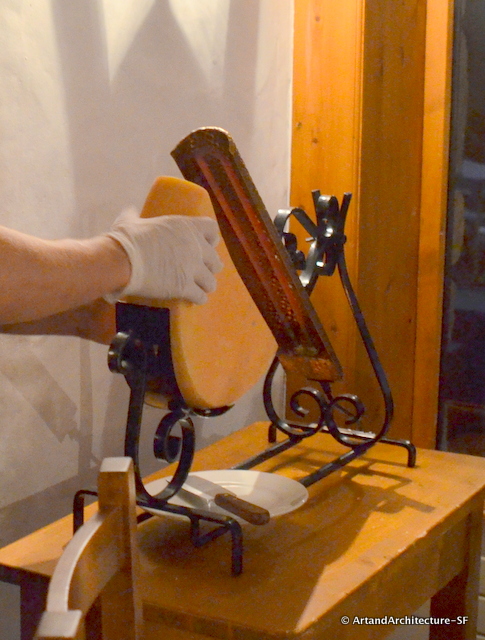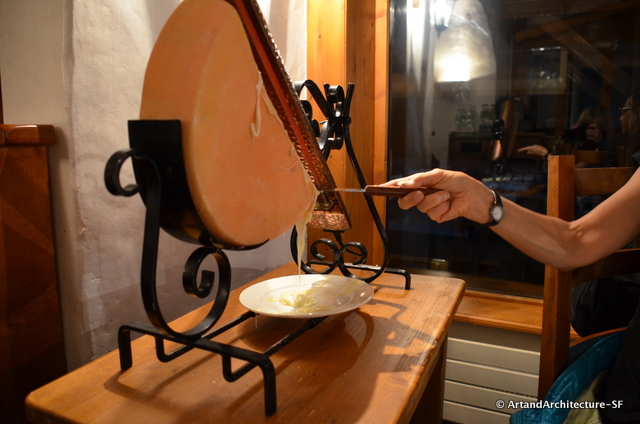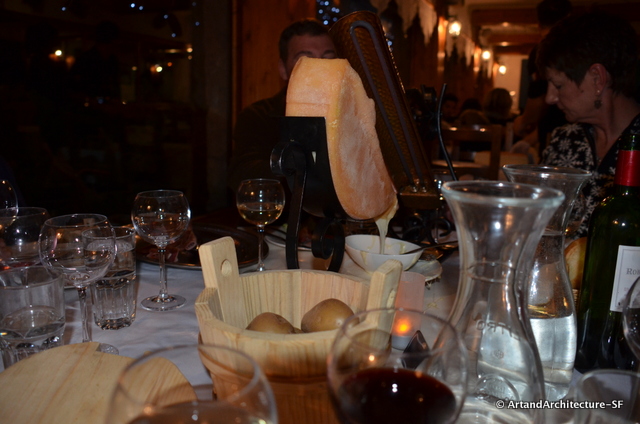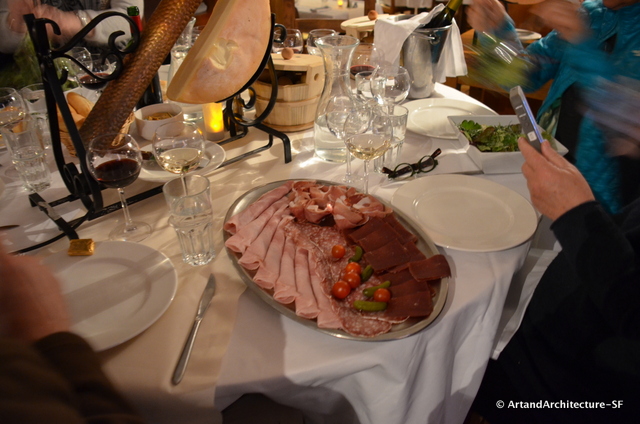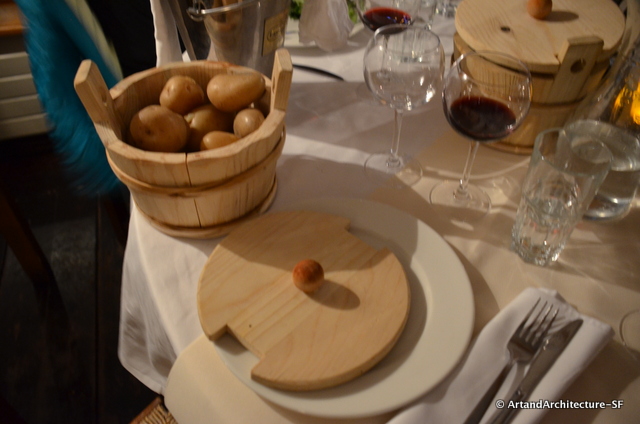Food at the Hotel Courcheneige is excellent, and we walk away from dinner every night astounded and sated, however, one night we decided to vary from the normal fixed menu and have Raclette. What a fun evening!
Raclette is a Swiss dish which is also indigenous to parts of Switzerland. It is also the name of the cheese itself that is used in the meal. The Raclette cheese round is heated, either by simply being set in front of a fire or by a special machine, then scraped onto plates; the term raclette comes from the French word racler, meaning “to scrape,” due to the fact that the melted cheese must be scraped from the unmelted part of the cheese onto the plate.
Traditionally Raclette is accompanied by small firm potatoes (Bintje, Charlotte or Raclette varieties), gherkins, pickled onions, and dried meat, such as Prosciutto, Speck, Jambon, Salami, and Chorizo.
I had never heard of Raclette cheese, so I needed to do some research. Raclette is a semi-hard cheese made on both sides of the French and Swiss Alps. Valais Raclette or Fromage a Raclette, as they are traditionally called, are made using ancestral methods with unpasteurized cows milk from alpine meadows. The cheese guru states that the cheese has a thin, brownish-orange coloured rind and a pale yellow pate with a few and scattered open holes. It is has a very distinctive pleasant, aromatic smell with a creamy texture, similar to Gruyere cheeses, which does not separate even when melted. The flavour can vary from nutty, slightly acidic to milky.
Apparently Switzerland supplies 80% of Raclettes, and French Raclettes are slightly softer with a smooth and creamy flavour. Ours had a very orange rind and the flavor was very mild.
There is nothing new about Raclette, it was mentioned in medieval writings, and in texts from Swiss-German convents dating from as far back as 1291. It was mentioned as a particularly nutritious meal consumed by peasants in mountains of Switzerland and the Savoy region of France. At that time it was known in the German-speaking part of Switzerland as Bratchäs, or “roasted cheese.”
Traditionally, Swiss cow herders took the cheese with them when moving cows from the pastures to the mountains. In the evenings, around the campfire, they would place the cheese next to the fire and, when soft, scrape it on top of bread
We enjoyed ours on top of potatoes, bread, and by the spoonful. It was really a great way to spend an evening with friends!

